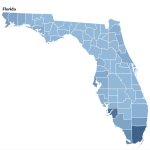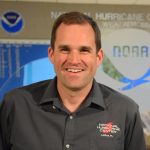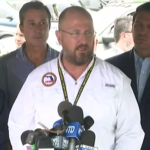Plus a new model, focus on storm surge
 Florida and nine other states file suit to stop FEMA’s new flood insurance rates, a new map shows flood claims back to 1980, communities band together for flood resilience funding, a new NOAA model is out this hurricane season, and the new National Hurricane Center Director shares his special focus for the season. It’s all in this week’s Flood Digest.
Florida and nine other states file suit to stop FEMA’s new flood insurance rates, a new map shows flood claims back to 1980, communities band together for flood resilience funding, a new NOAA model is out this hurricane season, and the new National Hurricane Center Director shares his special focus for the season. It’s all in this week’s Flood Digest.
 Flood Insurance Lawsuit: After complaining for months, Louisiana Attorney General Jeff Landry has filed a lawsuit against the federal government, saying FEMA’s Risk Rating 2.0: Equity in Action method of calculating federal flood insurance rates is unfair and unaffordable. Some Louisiana parishes will see rates increase by more than 500% he said. Florida has joined the suit on behalf of the 1.4 million Floridians with National Flood Insurance Program (NFIP) policies, as have eight other states. The lawsuit alleges the more granular risk model improperly considers “hypothetical” future risks and doesn’t properly account for mitigation projects to protect properties from flood damage.
Flood Insurance Lawsuit: After complaining for months, Louisiana Attorney General Jeff Landry has filed a lawsuit against the federal government, saying FEMA’s Risk Rating 2.0: Equity in Action method of calculating federal flood insurance rates is unfair and unaffordable. Some Louisiana parishes will see rates increase by more than 500% he said. Florida has joined the suit on behalf of the 1.4 million Floridians with National Flood Insurance Program (NFIP) policies, as have eight other states. The lawsuit alleges the more granular risk model improperly considers “hypothetical” future risks and doesn’t properly account for mitigation projects to protect properties from flood damage.
Florida Attorney General Ashley Moody said the new methodology “defies both law and logic,” writing in the Florida section of the lawsuit that “high insurance rates will cause people to leave the state of Florida because they can no longer afford to live in the state. In addition, it will depress property values, particularly in areas where flood insurance is required.” FEMA had no comment on the lawsuit. In announcing the program two years ago, it said that 20% of the NFIP policies in Florida will see immediate premium decreases, with another 68% seeing increases of $0-$120 annually. Any increases would be at an 18% maximum annually, until the full actuarial rate is reached.
 Past Flood Claims Map: The NFIP has produced a map that shows federal flood insurance claims across the United States since 1980. You can sort the historical claims in every state and by county, but only those properties with an NFIP claim. Florida policyholders have been paid on more than 228,000 claims, totaling $9.9 billion since 1980.
Past Flood Claims Map: The NFIP has produced a map that shows federal flood insurance claims across the United States since 1980. You can sort the historical claims in every state and by county, but only those properties with an NFIP claim. Florida policyholders have been paid on more than 228,000 claims, totaling $9.9 billion since 1980.
 Flood Resilience: There are strength in numbers, as the old saying goes. The American Flood Coalition has announced a new program to provide timely support to small low-resource communities to get the federal funding they need for flood resilience projects. The Coalition’s Flood Resilient Communities Cohort is bringing together five communities in North and South Carolina in a program that also stresses enhanced two-way communication with FEMA.
Flood Resilience: There are strength in numbers, as the old saying goes. The American Flood Coalition has announced a new program to provide timely support to small low-resource communities to get the federal funding they need for flood resilience projects. The Coalition’s Flood Resilient Communities Cohort is bringing together five communities in North and South Carolina in a program that also stresses enhanced two-way communication with FEMA.
 New NOAA Model: The National Hurricane Center just debuted its improved Probabilistic Storm Surge model to version 3.0. “P-Surge” as it’s called will now provide coastal surge predictions up to three days in advance, a big improvement over the current two-day warning window. The system combines wind and storm tracks with new data on vegetation in the storm’s path. It will not only show storm surge from the ocean, but will include adjoining tidal rivers, sounds and bays. It will also provide first-ever surge modeling for Puerto Rico and the U.S. Virgin Islands.
New NOAA Model: The National Hurricane Center just debuted its improved Probabilistic Storm Surge model to version 3.0. “P-Surge” as it’s called will now provide coastal surge predictions up to three days in advance, a big improvement over the current two-day warning window. The system combines wind and storm tracks with new data on vegetation in the storm’s path. It will not only show storm surge from the ocean, but will include adjoining tidal rivers, sounds and bays. It will also provide first-ever surge modeling for Puerto Rico and the U.S. Virgin Islands.

Michael Brennan
Hurricane Center Director Focus: Mindful that it was storm surge that caused the worst damage and most deaths in Hurricane Ian, the new director of the National Hurricane Center said recently that “we’re working to improve community safety through clear communication on the various hazards posed by these storms.” Mike Brennan said the improved P-Surge model is just one example. The hurricane center also will extend its long-range forecast from five to seven days, giving residents more time to prepare. Also new: an easier-to-read format in peak storm surge forecast graphics.

Kevin Guthrie
Florida Emergency Management Chief Kevin Guthrie, in an interview with the News Service of Florida, said his team will focus on sharing with residents the different impacts of storms coming straight off the ocean or Gulf versus hitting natural barriers, such as mangroves, which can mitigate storm surge. “That way, people can make better decisions, more informed decisions, and we can help obviously save more lives in the future,” he said.
LMA Newsletter of 6-12-23

